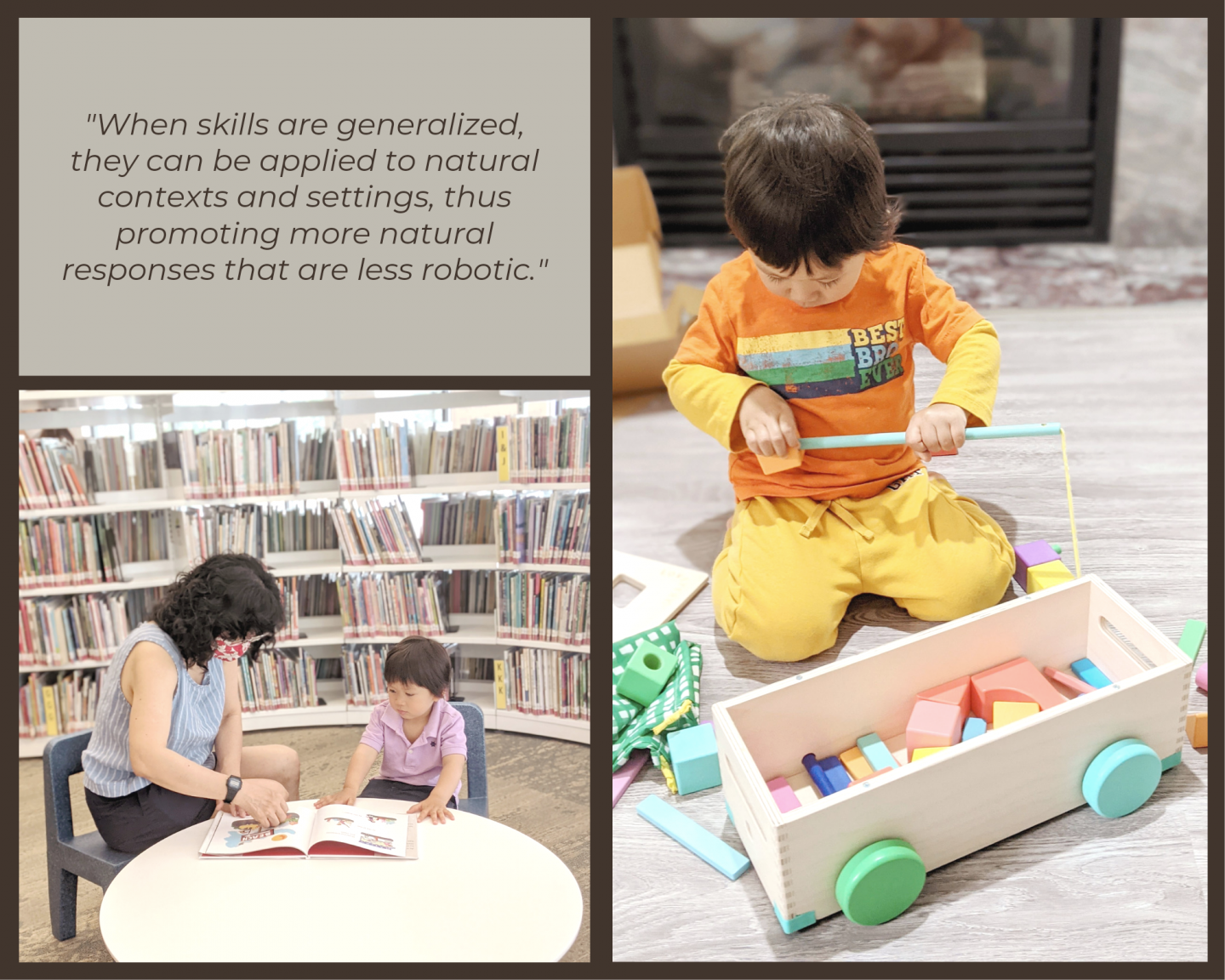
There are those who are critical of the Applied Behavioural Analysis (ABA) practice, I believe mostly because of the techniques that were used during the 60’s and 70’s when ABA was in its infancy. Admittedly, some of these historical practices are controversial. While I think many of the criticisms are warranted, what I can assure you is that ABA has evolved and today’s practices are not the same as those of 20 to 30 years ago. During those days, different circumstances existed and ABA therapy meant the difference between hopeless versus treatable; specifically, the afforded choices were either treatment or institutionalization. Further, due to its niche at the time it was a one size fits all approach. Today, the practice has evolved significantly (and is continuing to grow and adapt) and a good quality ABA program is highly individualized, client centered, effective and compassionate.
READ: What is Applied Behavioural Analysis?
Given this historical context, what are the common misconceptions that still surround ABA today? Join me and let’s take a deeper look at 6 common myths surrounding the practice.
Myth #1: ABA Therapy is only useful for individuals with severe autism or behavioural challenges.
Not true! I’ve used ABA techniques on my own neurotypical son and even on my husband with great success. The principles of ABA can be applied to anyone, and as we often say in the field: ABA is simply good teaching.
You’ll find teachers using ABA techniques to manage classrooms and prepare lesson plans, leaders of corporate companies using these techniques to motivate their employees and everyday moms, like myself using tools within the ABA toolbox to help toilet train their toddlers. You’ve probably used some basic ABA techniques without even knowing them!
“ABA is simply good teaching.”
Myth #2: ABA uses aversive techniques and punishment.
Merriam Webster dictionary defines punishment as, “suffering, pain, or loss that serves as retribution” or “severe, rough, or disastrous treatment”. Obviously, this would be considered an unethical form of teaching, and indeed in the context of ABA this term is defined and used differently. In ABA, punishment means the likelihood that a behaviour occurs again decreases due to a specific consequence that follows the behaviour. For example, if you drive over the speed limit (behaviour) and a police officer issues you a ticket (consequence), you are less likely to speed in the future. The speeding ticket serves as punishment because it reduces the likelihood that you will speed again. How often have you missed your credit card payment deadline and had to swallow the ridiculously high interest rate charge before learning to change your behaviour so that next time you don’t miss that bill payment? That high interest rate charge serves as punishment because it reduces the likelihood that you will pay your bills late again.
So while there are certain situations where ABA-defined punishment procedures might be used, reinforcement-based treatments are considered best practice in the field of ABA and are the go-to approach for behaviour analysts today. Behaviour analysts are required to pursue multiple attempts of positive reinforcement approaches before considering any ABA-defined punishment procedures, which are used only as a last resort after all positive reinforcement strategies have been exhausted.
Myth #3: ABA creates robots through drilling exercises at the table and teaches only one way of responding.
This likely refers to the method of Discrete Trial Teaching (DTT), which was the most common ABA teaching practice 20-30 years ago. DTT is a 3 part method of breaking down a complex skill into simplified and structured steps, often run sitting at the table. Every learner is different and as such may require different ways of teaching to best master the skills they want to learn, and some learn best when taught in a highly structured and repetitive fashion such as with DTT. While this is one method within the scope of ABA, it is not the only method of teaching. Some other ABA teaching strategies include:
- Direct Instruction
- Precision Teaching
- Personalized System of Instruction
- Incidental Teaching
- Task Analyses
- Visual/Activity Schedules
- Behaviour Contracts
- Etc.
A well designed ABA program will work to incorporate teaching methods that are individualized and best suited for the specific learner. Sometimes different teaching methods are necessary to teach different skills.
Another critical component of ABA nowadays in busting this myth is that ABA teaches the individual to generalize the skills that were taught. In order for a skill to be considered fully mastered, it must be able to carry across:
1) Different environments
2) Various people and
3) A range of different materials
When skills are generalized, they can be applied to natural contexts and settings, thus promoting more natural responses that are less robotic.

For example, a therapist may initially teach a child to identify letters of the alphabet on flashcards at the table, but once that skill is learned we target generalizing letter identification: across different environments (can the child identify letters in the classroom, at the grocery store, at the library, etc.); with different people (can the child identify letters if asked by his/her parents, teachers, peers, etc.); and using different materials (can the child identify foam letters, letters on wooden blocks, letters on a car license plate, etc.). A skill that hasn’t generalized across those three domains is not a skill that we consider fully mastered. If I can identify letters of the alphabet only if they’re presented on flashcards when my teacher asks me in the classroom setting, but I can’t identify them when I’m out and about at the grocery store, then I haven’t fully mastered the skill of letter identification, have I? Fun fact: I do indeed know all my letters 😉
Myth #4: ABA doesn’t always work.
The practice and methodologies of ABA work and are highly effective, but are bounded by the physical and cognitive capabilities of the individual. I would love to be able to dunk a basketball, but no matter what ABA strategies are used I (at 5’2”) won’t be able to. Less obvious are cognitive limitations: my husband tells me he can’t understand the principles of quantum mechanics, try as he might. On the high-cognitive end of the scale, it was rumoured that to get the musical prodigy Mozart to wake up in the mornings, his wife played all the keys in a piano scale but left the last one. I’m sure this annoyed Mozart but it provided enough motivation for him to get up so he could play the last key of the scale – kudos to Constance for her clever setup used to shape her husband’s behaviour!
Having said this, ABA may not be for everyone. Just as every parent has differing parenting styles and family philosophies, some may find that this form of therapy is just not the right fit for them. Often though, the right fit can be a matter of finding a behaviour analyst who can create a suitable program while working within the family’s philosophies, cultural preferences and comfort levels.
Myth #5: ABA only uses food (edibles) as reinforcers.
While it’s true that edibles are sometimes used as reinforcers, they are not exclusively used.

Food is what is referred to as a primary reinforcer – one that is innate and does not need to be taught. Other items like money, movie tickets or school grades for example are considered secondary reinforcers and by nature, are not innate to human desires unless taught their worth. Because food is a basic human need, it serves as a very powerful reinforcer – meaning, it’s highly effective as a motivator.
Behaviour analysts often consider using edibles with learners who a) are very young, b) have a limited repertoire of things or activities they like, or c) have very severe behaviours. However, a good ABA program will make an effort to fade out food and introduce other types of reinforcers as soon as feasible.
Myth #6: ABA makes learners reliant on reinforcement and rewards.
Humans are naturally inclined to do things that are reinforcing to them, and in this way it can be said that we are already reliant on reinforcers for our behaviour (whether the reinforcer is obvious or not). This is a fundamental characteristic of human behaviour that resides in each of us, and therefore is not something ABA is responsible for developing within an individual. Name a behaviour, and there will be an underlying function and reinforcer that perpetuates the behaviour, however obscure.
Providing reinforcement is a core component of the practice and if you look closely, the use of reinforcement is all around us. Parents may give children money for completing chores around the house, people may donate to charities because it provides internal satisfaction, students may act out in the classroom to escape to the principal’s office (yes even this can be a reinforcer). The fact is no matter our age or level of functioning, we all need some sort of motivation for engaging in certain behaviours. In the same sense, when we are shaping new behaviours (particularly ones that are challenging for us), sometimes we need a little extra motivation to get us going. In my personal experience, the promise of a nice head massage works wonders for encouraging my husband to throw out the compost in the dead of winter when it’s -10°C out! 😂
Typically, contrived reinforcers (e.g. toys, food, stickers) are used at the start of a behaviour change program but over time, behaviour analysts will work to pair the contrived reinforcers with more naturally occurring reinforcers (e.g. verbal praise, high five, smiles). As in my previous example with my husband, if the compost were to sit any longer in our house it would naturally start to release its unwanted odour, in which case disposing of it (and therefore the smell) would be naturally reinforcing without the promise of the head massage. Over time, many naturally occurring reinforcers will take the place of contrived reinforcers and this helps to drive our behaviour.
I hope you’ve enjoyed reading and learning as much as I’ve enjoyed sharing with you. Feel free to leave a comment or question, or DM me on Instagram @everydaypracticalmama. Until next time!

